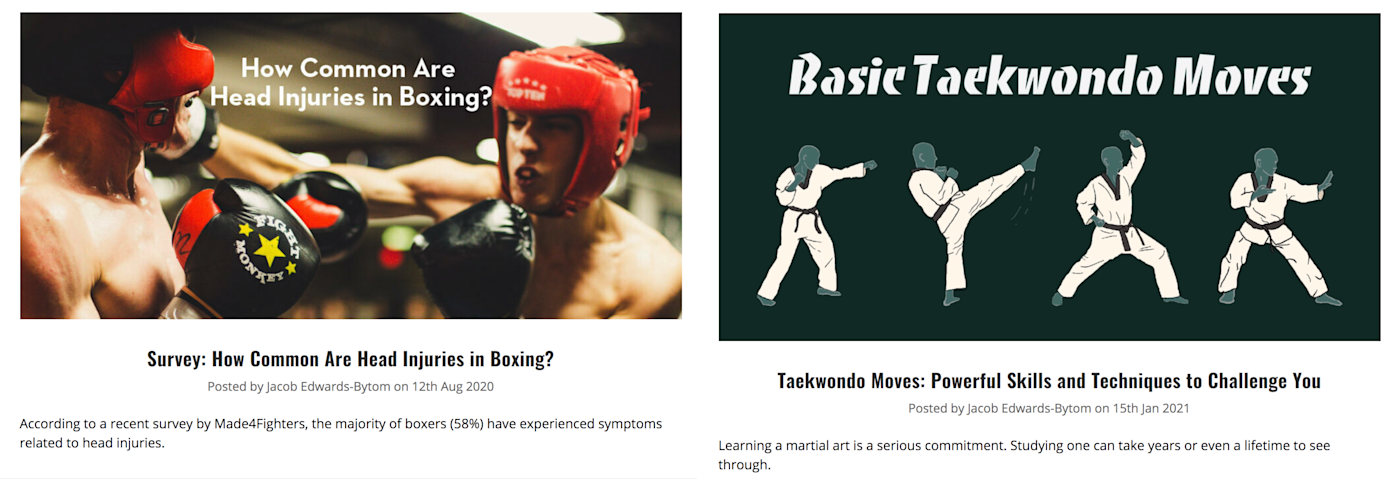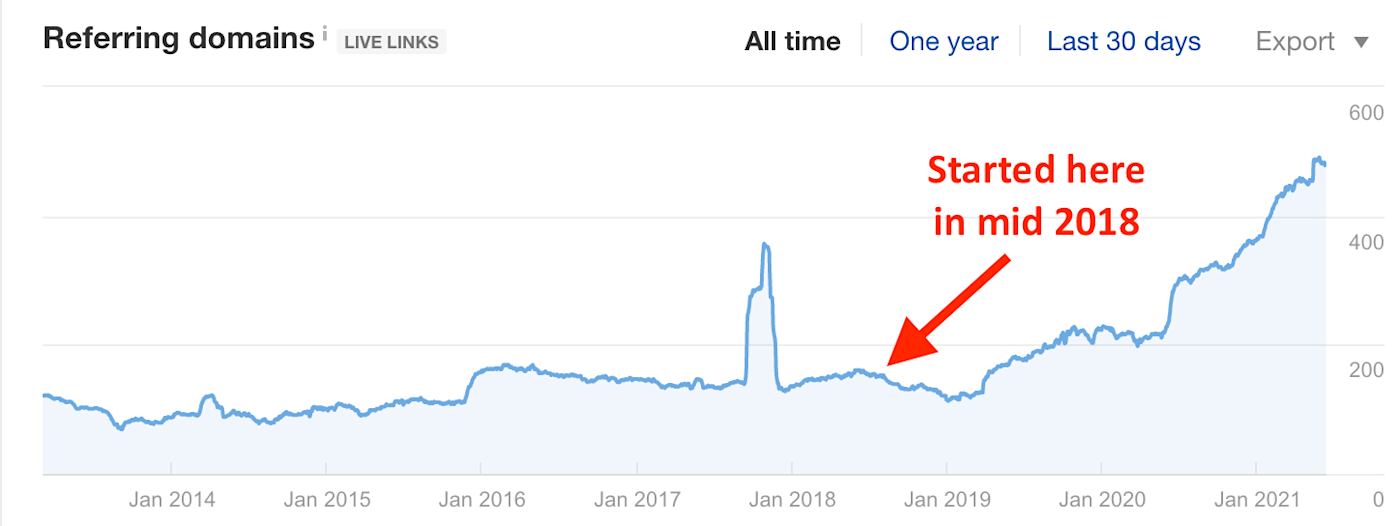If you're like me, then you know what it feels like to be working in your business rather than on your business. After all, there are assignments to get done. You have products to ship, customers to attend to, and finances to look after. It's easy to fall into the routine of the day-to-day.
And there's nothing inherently wrong with this. It's how most small and medium-sized businesses keep the lights on. They service their existing customers, generate revenue, and try to turn a profit. The only issue? It doesn't scale.
This was the situation my team found ourselves in a few years ago. We're a family-run business that's been in operation for nearly three decades. When we started, Sir Mix-a-Lot and Annie Lennox were at the top of the billboard charts.
Since then, we've managed to transition our martial arts clothing company, Made4Fighters, from a brick-and-mortar store to an eCommerce brand doing seven figures in annual revenue. Not bad—but we eventually plateaued, and we were in a rut.
We needed to work on our business if we wanted to get out.
Re-evaluating our marketing strategy
The challenge with marketing today is there are so many different channels to consider. There's email, social, PR, affiliate, podcasting, video, and influencer marketing, just to name a few. It can be hard to keep up with.
When we were a brick-and-mortar establishment, our options were limited. We handed out flyers at gyms and bought ads in local newspapers. It was simple, and that worked for us. But things have changed.
We knew we needed to expand our digital footprint. As an online business, the primary way we were going to generate more sales was by getting more traffic to our website. We didn't have the resources to invest in every available marketing channel. We'd had some past success with Google Ads, and while it generated immediate traffic and conversions, it was expensive—and that made us susceptible to losing out to competitors with larger ad budgets.
Eventually, we decided to focus on search engine optimization (SEO).
The agency or in-house conundrum
Once we'd decided which channel to invest in, we had to make an important decision: outsource our SEO marketing or build an in-house team. Here's how we considered both options.
If we worked with an agency, then we wouldn't have to hire and onboard an internal team. That meant we would save on employee salary costs as well as less obvious expenses such as taxes, office space, benefits, and training. And we'd get to partner with a team that had SEO domain expertise, which we were lacking internally. On the flip side, it can be hard to pick the right vendor. There's an unlimited supply of SEO agencies. We'd heard stories of other companies getting burned, and we didn't want to be next.
If we built an in-house team, then we'd have more control of the work that was done. And since everyone would only be working on our website, they would become more familiar with the nuances of our industry and customers. On the other hand, building our own SEO team wouldn't be cheap. Realistically, we'd need to hire at least two or three experienced marketers.
In the end, we decided to partner with an SEO agency called CanIRank. That doesn't mean this is the right choice for every company. It was just the best option for us. Why? Because we didn't want to fall back into our habit of working in our business. We knew that if we built our own in-house team, it would take time away from other initiatives we wanted to focus on, like opening a new warehouse facility and R&D for product development. However, we still remained involved and collaborated with CanIRank's team when they needed our input.
Patience, patience, patience
We knew SEO took time—we just didn't know how long. Looking back, that's one of the hardest parts about committing to it. It's difficult to know if you're making progress or wasting time.
Here's a snapshot of our organic traffic from Google Analytics after the first three months.

Not exactly the growth trajectory we were hoping for. In fact, our traffic and sales actually declined slightly. But we were determined to remain patient.
Fortunately, we started to see some initial progress. After three more months, our traffic increased 18%.

SEO Fundamentals: optimization, content, and authority
Our initial focus was improving rankings of the keywords that historically converted well through PPC (pay-per-click ads). As I mentioned earlier, PPC can be expensive. But the benefit is it provides immediate feedback. If something is working, you'll know quickly. And after testing different bidding strategies in Google Ads, we knew which keywords were most likely to generate sales. The goal was to rank for those keywords organically rather than rely on the traffic via ads.
Optimizing commercial pages
The first strategy we tried was optimizing our product category pages. This may sound complicated, but it's actually pretty simple. Most of the pages on our site were product catalogs with no informational content. This made it difficult for search engines to know what our pages were about. Below is an example of what many of our eCommerce category pages looked like.

As you can see, it was bare-bones. We listed our products but nothing else. While we wanted to improve our SEO, we also didn't want to make changes that would compromise the user experience. Ultimately, we decided to include a description of the products at the bottom of each page, underneath the listings. Here's an example of what our punching bag catalog page looks like after we made the updates.

We made sure to weave in the keywords we were trying to rank for within the page elements such as headings, body text, and URL slug. Since we have more than a hundred different product categories on our website, optimizing each one required a lot of work over many months.
Blogging to inform, not sell
Of course, one of our objectives was to rank for transactional keywords that were likely to convert sales, but we also wanted to build an audience. And we knew content marketing was going to be a big part of that. But we needed to adjust our approach.
In the past, we wrote about our products. If we started to offer new gear or wanted to push a specific clothing item during the holiday shopping season, for example, we would promote those products on our blog. That only got us so far. We were too focused on our own needs and desire to sell more. We realized we could get more traffic to the site by expanding the marketing funnel and creating content that would really help readers.
We made sure that each piece of content we published supported our website's visibility in search engines. We did keyword research to find out what our prospective customers were searching for at different stages of the buyer journey. This included educational content such as training guides, fighting techniques, and industry reports for different martial arts.

Most recently, we launched an interview series where we feature industry experts to learn about their experiences and hear their advice. It's helped us build more of a community and allowed us to collaborate with martial arts influencers.

Growing brand authority
One of the most challenging parts of SEO is link building: getting people to link to your website to help boost its search ranking. It takes a lot of time and persistence, and there's no guarantee of results. We tried several different strategies, and not all of them were fruitful. Ultimately, the ones we had the most success with were as follows:
We used HARO, aka Help a Reporter Out, to pitch our expertise for different articles that bloggers and journalists were writing. There weren't many writers looking for martial arts resources, but there were articles covering eCommerce, and that's a topic we know a lot about, so we focused on pitching those opportunities when they came through.
We dug into guest blogging. We submitted quality content for publication on another website, and in return, they cited us for our work with a backlink. It was a win-win. In our case, we pitched thought leadership content to martial arts blogs. This helped us establish our brand as a credible source in our industry and also benefited our SEO because we were earning links from related sites.
Finally, we earned links by getting bloggers and editors to mention our products in online reviews they wrote. That meant pitching our brand to writers covering martial arts clothing and gear. It required some relationship-building, and we even offered some authors product samples so they could test the quality of our gear. Ultimately, this strategy helped get our brand featured in publications such as Men's Health, Esquire, The Guardian, and Vogue.

We started to invest in link building in mid-2018. It took close to six months before we started to understand which strategies were effective for our niche and see results, but then the results came pouring in. Here's a view of the number of referring domains linking to our website.

Side-stepping a double blow
After several flat years, our business was growing again. Our investment in SEO was finally paying off.
Then COVID-19 hit, and everything changed.
Like many companies, we felt the immediate effects of the pandemic. A significant portion of our customers are gyms and martial arts studios, and they were hit hard during the lockdowns and social distancing measures. That meant they didn't have the budget to buy our products anymore.
And as if the pandemic didn't complicate things enough, Brexit went into effect, which led to even more uncertainty. As a result of the UK leaving the EU, we had to comply with new tax laws, which cut into our margins on any products that we imported or exported internationally. We're based in the UK, but many of our customers are located in other European countries.
Here's the amazing part: our sales increased during this period. Our revenue has more than doubled over the last 18 months despite a global recession and new trade regulations. In fact, our business is in the strongest position it's been in during the last 30 years.
Why?
While gyms were closing their doors, online shopping was exploding. And because we had spent the two years prior improving our digital footprint, we were in a great position as more people purchased clothing online. We also added a new category of home gym equipment to our website, including products such as rowing machines, stationary bikes, and treadmills. This allowed us to capitalize on the shift toward home workouts.
Ironically, because we weren't as dependent on PPC ads anymore, we were able to take advantage of the lower advertising costs during the peak of the pandemic. And while other companies were taking their foot off the gas, we continued to invest in SEO and were able to claim top rankings that would otherwise have been too competitive in normal times.
Below is a view of our monthly organic traffic over the past three years.

The silver lining of a recession
Many great businesses have been born from the challenges of a recession. Here are the takeaways we learned and how you can prepare for the next one.
Invest in online channels
The pandemic has reinforced the importance of having a strong online presence. We were fortunate that we started investing in our website's SEO in 2018. But we didn't know how much the economy was going to change in the future. If we had waited longer or invested in something else, then it's possible this story could have a different outcome.
Hopefully, the pandemic motivates more small and medium-sized businesses to prepare for the next recession by investing in their online marketing.
Reduce risk through diversification
Your business should never be dependent on one customer, one product, or one location. Just like you wouldn't want to invest your life savings in a single stock, your company shouldn't take that approach either.
Even though gyms, a large part of our B2B customer base, were shutting down during the pandemic, we were able to stay afloat because of our B2C division. And as Brexit has complicated international trade, we've been able to rely on the domestic market.
Likewise, we've continuously expanded our product categories. Ten years ago, we only sold MMA gear. Today, we cater to many other sports, such as karate, Brazilian jiu-jitsu, boxing, Muay Thai, Taekwondo, wrestling, and kickboxing. This diversification has helped our company build stability and maintain flexibility as the economy changes.
Adapt to change
Only about half of small businesses survive five years. And only one-third survive ten years or longer. Those are intimidating numbers if you're a business owner. But the good news is you don't have to accept your fate and become a statistic.
One of the reasons we've been able to stay in business for nearly 30 years is our ability to adapt. We've evolved from a brick-and-mortar store with one location to an international eCommerce company. Similarly, we adjusted our marketing strategy when our growth plateaued.
This doesn't mean we're perfect. We've made plenty of mistakes along the way. But like all companies, we must continue to work on our business if we want to last another 30 years. Because one thing is certain: change is inevitable.
This was a guest post from Jacob Edwards-Bytom, the Director of eCommerce at Made4Fighters, an online store that designs clothing and training gear for martial arts and combat sports. Want to see your work on the Zapier blog? Read our guidelines, and get in touch.





